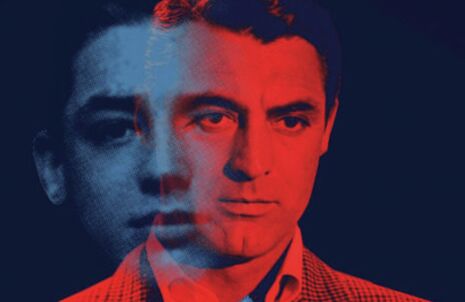Review: Perhaps we are all Becoming Cary Grant
Reflecting on an intriguing, if somewhat low-budget, documentary, Holly Platt-Higgins finds much more to reflect than its eponymous subject

Mark Kidel’s documentary is not really a film about Cary Grant. Although it is compiled of lines from Grant’s unpublished autobiography and footage he took on his old handheld camera, the film extends far beyond the life of the movie star.
"It makes one consider the multiplicity of people we experience, and who experience us"
Grant was, at one time, Hollywood’s finest. He was born Archie Leach in Bristol, and moved his way up from acrobat, to Broadway star, to Californian dreamboat. The documentary, however, was not interested in his on-screen presence. It looked to explore the reasons behind his existential crisis in the late 1950s, and his relationships with LSD, women, and fame.
His associations with women, namely his mother, proved to be the core of his insecurity, the reason for his breakdown, and for starting therapy. Once a week, for five hours, Grant would go to a therapist’s office, choose his music for the afternoon, take LSD, and attempt ‘fusion’ – merging his unconscious and conscious worlds together. In a slightly budget-Requiem for a Dream fashion, the film cuts between random scenes and images: dancing women, the sea washing over the shore, birds, people in masks, Grant, his mother, his ex-wives. As the scenes cut between each other, strange noises build in the background, often culminating in a ringing or buzzing. While one can understand the intention behind making the act of watching partially synonymous to a trip for the viewer, the occasional clips of an actor, who clearly is not Grant, writhing around on a chaise longue, making bizarre grunting noises, were certainly the least enjoyable moments.
During these therapy sessions, Grant realised, “I was killing my mother through relationships with other women.” While it is impossible to do justice here to the turbulent dynamic between Grant and his parents, journeying through this relationship, watching aspects of it unfold, is integral to the intrigue and delicacy of the film.
Unsurprisingly, the sadness of his childhood could not be fixed by fame. Grant struggled to locate his identity his whole life. He felt people were “just a bunch of molecules until you realise who you are.” He married four times, changed his name, adopted American citizenship in 1941, played hundreds of roles from leading ladies’ arm-candy to Cockney-drunk, but nothing changed the fact that the world was in love with Cary Grant, and he had no idea who that person was.
The documentary makes one consider the multiplicity of people we experience, and who experience us - the distinct version of ourselves that we act out for the entertainment of others. Kidel is clearly drawing heavy parallels between the acting world and the real world, noting that the apparent lack of difference. One might be Cary Grant to a nation, but still sign letters home as Archie. Identity is presented as a deeply personal and sacrosanct thing, one which is affected by other people but equally relies upon them. There is no point in knowing who you are if you do not have anyone to share that person with.
Towards the end of his LSD treatment, Grant explained that he felt as if “a light went on in my brain”, and he realised he had wasted years angry at his parents, ignorant of needing to confront his own pain. It was at this point, just before the birth of his only child Jennifer that he retired and wrote the words, “Oh my God – Humanity please come in.”
Becoming Cary Grant is a film worth watching event if one has no idea who Grant is. The documentary adopts a gently didactic approach, and, as all good art does, makes the process of considering some deeply personal and difficult questions both enjoyable and worthwhile
 News / SU reluctantly registers controversial women’s soc18 December 2025
News / SU reluctantly registers controversial women’s soc18 December 2025 Features / Should I stay or should I go? Cambridge students and alumni reflect on how their memories stay with them15 December 2025
Features / Should I stay or should I go? Cambridge students and alumni reflect on how their memories stay with them15 December 2025 News / Dons warn PM about Vet School closure16 December 2025
News / Dons warn PM about Vet School closure16 December 2025 News / Cambridge study finds students learn better with notes than AI13 December 2025
News / Cambridge study finds students learn better with notes than AI13 December 2025 News / Uni registers controversial new women’s society28 November 2025
News / Uni registers controversial new women’s society28 November 2025









